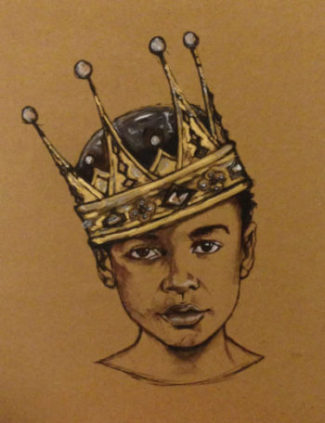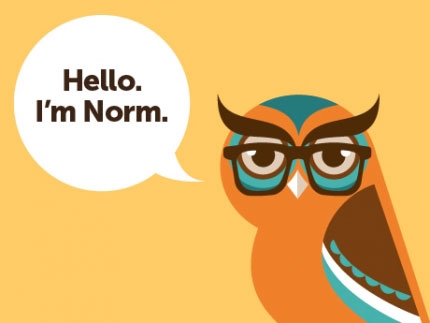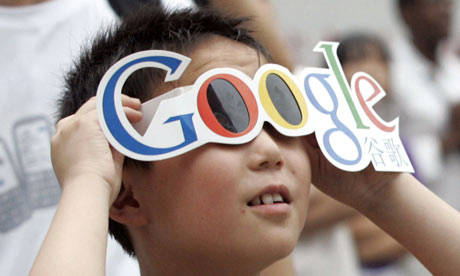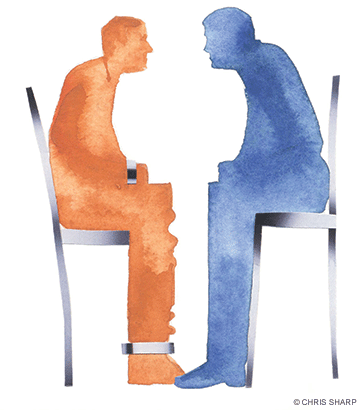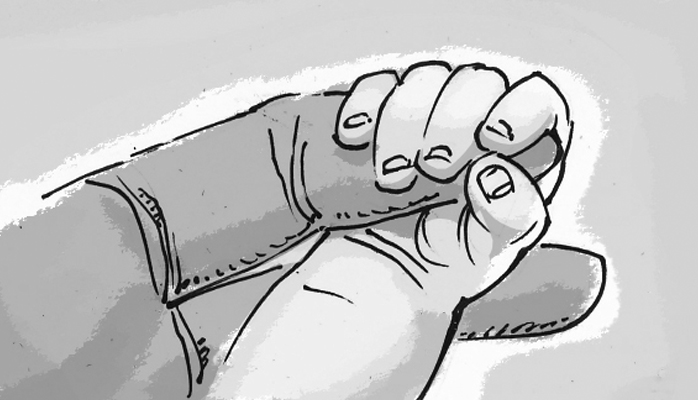(if you want schools to be “safe” from black boys, make schools safe for black boys)
The parents of our second-grade class called an emergency meeting. One of the other students, a small black boy, hit his teacher in the nose and a number of the class’ parents are concerned about safety. Even though our principal makes it very clear that we will not discuss other people’s children, the sense of urgency from some parents leads to a more impromptu conversation with our principal (prior to the meeting) in a manner that conveys a desire to fix the problem of safety but also could sound like suggestions to fix or assess the appropriateness of the child’s family as part of our community. In reality, these pointed questions and suggestions in a non-structured setting risk (un)intentionally and falsely validating assumptions held of this family. Such conversations always risk “othering” our most disconnected community members, and I fear, set the stage to oust them.
I know the boy. He is totally cute, sweet… and fragile. He is tiny in stature and in voice. Because it seems that he has – somewhere at some time – experienced more trauma than a child of 7 should, he is not tiny in emotions. Because he is black and is not tiny in emotions, he is not tiny in how people see and experience him. The boy’s mother, a black woman, is at the meeting. She speaks with heavy emotions of her own; she speaks of the fear she feels being in this very meeting. She shares about herself as an educated, professional woman (“a therapist, a good mother”). She shares about the child so many want to but will not discuss as a beautiful and brilliant child who is going through something bad that neither defines him nor represents who he is when he is out of school. It is good that her witness checks assumptions the other parents made of the child and his family just a day before; it is not good that she even had to do this.
As I mentioned, it seems that this child has – somewhere at some time – experienced more trauma than a child of 7 should; yet, regardless of where the trauma originates, it has become overwhelming clear to me that our schools are places where a cumulative trauma is experienced and compounded for our black boys every day because of its very construct.
My husband, Gary and I have a son in this same class – actually at the same table of this child. Our son, another 7-year old black boy, has experienced and is working through his own situational and inter-generational trauma. We actually know where and how some of his trauma originates… and just like his tablemate, school has been a place that both reignites and compounds his previous trauma while it also introduces and reinforces new and compounded trauma. School is not designed to educate or benefit black boys. Rather, it continues to be a place where we dehumanize some by normalizing expectations that are not culturally relevant and by criminalizing behaviors which do not align with white culture.
Even then, we hold these expectations and standards unequally with students based on the skin they are in. My observations as an educator for the past 20+ years, and even moreso as a new dad for only 1+ year, have validated what research has proven time and time again: Systemic racism manifested through our internalized biases disproportionately favor some students and disadvantage others simply based on their identity. The fact that our teacher force is a steady 75-80% white and female even as our student bodies become more and more diverse is not just an interesting fact, it is a manifestation of a system which is designed for reproducing disparate results.
The realization of systemic white supremacy in our schools occurs as tangibly within our day-to-day classroom exchanges – even amongst our most well-intentioned teachers and schools. In my frequent observations. I continuously see black (and brown) boys (and girls) called out, checked, controlled and ultimately pushed out for infractions to a dominant culture’s code of conduct (even when these children are acting in age appropriate ways) and white children and (those who align with dominant white culture) ignored or addressed more therapeutically when displaying the very same behaviors. On the other side, I see those who identify with white culture recognized and praised for all levels of “positive” engagement and “success” while their black and brown counterparts’ successes go unassessed and ignored because it is good enough that they are not “acting out”. I have seen this dynamic in the classroom, the office, the hallway and the yard.
This patterned dynamic is systemic, and it directly relates to our predispositions and beliefs about students based on the skin they are in. Regardless of the behavior, when we educators (primarily from dominant, white culture) see a behavior – any behavior – from a black boy, we see it through the lens of our internalized, unconscious (and sometimes conscious) beliefs, fears and stereotypes, and that observed behavior immediately becomes distorted, exaggerated and criminalized because as a society and as a profession, we are irrationally afraid of black boys. Furthermore, our desire to control students through a cultural standard that is natural only to some, results in some children being supported to be independent learners and others cajoled into being dependent learners – assuring access to high level success to the few.
So, Gary and I attended this emergency parent meeting – and we did so for many reasons. We support our son’s teacher and his class, and we want their shared learning experiences to be joyful and effective. We support the boy who was involved and want to serve as allies to his family. We also know fully well, that if the problem were to be put solely on this child, it wouldn’t be long before similar tactics would be used to ostracize our own son as the next problem for this community “to solve”. Ultimately however, we attended because we believe our job to assure a quality education for our son requires us constantly and consistently to partner with his school and its community.
At the meeting’s start, our principal asked parents to share their hopes and fears. During this time, and later while smaller groups of parents talked at their tables, multiple parents stated, “I just want the class to be safe for everyone.”
I just want the class to be safe for everyone.
This phrase really stuck with me. As a lifetime educator, I have heard it (and said it) more times than I can count. But this time, it really stuck. I could not agree more! Of course we want the classroom to be safe for everyone, but still, there was something in this politically-correct-who-could-argue-with sentiment, that felt less than genuine. At first, I thought it was my unease with how “not being safe” has become code to rationalize pushing students out (without the burden of feeling guilt) for unwelcomed culturally diverse behaviors even if those behaviors are responses for feeling unsafe themselves – or even if the behaviors are age appropriate but just culturally different. Then it hit me. “Everyone.” Every-one. This perfect catch phrase (“safe for everyone”) was being weaponized and used as leverage to explain why any single child’s behavior could be deemed unacceptable or unwelcomed. So, when we say, “safe for everyone”, we really mean everyone except THAT one.
Still, one could argue this as a rational standard if we actually believe that a child’s “unsafe for others” behaviors come from a raw, unprovoked desire to cause harm. Yet, this simply is not the case. In my own experiences, every time we have explored why our son has behaved in any way that could be regarded “unsafe” for himself, for others or for property, he points to a trigger event in which HE did not feel safe. For example, there was the time we got a call because our son was climbing the fence to get out of the school. “He was being unsafe. Can you pick him up?” When we asked what was happening 5 minutes before any attention was given to him, he shared that an older child, probably playing, was choking our son who has a real fear of being killed (compounded, situation trauma). In this case, our son actually could make the case that climbing the fence was actually being safe. In fact, I can recall no incident in my entire career in which a student who was considered unsafe for themselves or others did not have a root issue that was itself based in distress, fear and lack of safety – either at the surface or deeper in their experiences.
So, by definition, when we want a school that is safe for every student, we must include even the one student we thought did not count. Disproportionately, we think our black boys do not count, and yet, as stated above, school is a place that dehumanizes black boys and therefore is for them, an unsafe place. So perhaps to reach our goal of making our schools safe for all (from the black boys who don’t feel safe), where we actually need to start is making our schools safe FOR our black boys.

